An Amazing Golden Chariot Experience - A Luxury Train Journey through Kabini, Mysore, Srirangapatana, Belur, Halebidu, Shravanbelagola, Hampi, Badami, Pattadakal & Goa
It was the day of Holi Festival and I started early at 3am for Bengaluru. I was full of excitement and everything went well and I reached Bengaluru by 9:30am. The plan was to start the train journey at 4pm from Taj West End and I had whole day to spend until then. Because of Holi I didn’t want to go out, but later I got to know that Holi is not celebrated at that scale in south India.
Action during Registration for Golden Chariot Journey : Taj WestEnd
At 4pm, the registration for Golden Chariot started followed by high tea. This was a good opportunity to interact with some of the folks who would be part of the journey.
At 5pm, one of the chief gardeners of Taj took us on the tour of the property. He started with the fact that Taj WestEnd is oldest Indian Hotel which was started as a hotel. There can be other old buildings which are not hotels, but they were built for different purposes, like various havelis or palaces. He also showed us one of the oldest post-box which is still in use (see above photograph of oldest post-box). He seemed to be passionate about plantation, green landscapes, and very well appreciates the importance of natural resources.
Throughout the walk he showed us various old trees which are as old as this property. During the tour, we tasted tamarind which was plucked in front of us.
He also showed us one of the oldest terrace gardens (the one you see in above photograph) on first floor of the property. It was amazing to see how carefully this whole property is maintained in the middle of the city.
Throughout the walk he showed us various old trees which are as old as this property. During the tour, we tasted tamarind which was plucked in front of us.
He also showed us one of the oldest terrace gardens (the one you see in above photograph) on first floor of the property. It was amazing to see how carefully this whole property is maintained in the middle of the city.
Taj West End is surrounded by lot of forestation and you don’t feel like that you are in a city full of concrete jungles.
After the campus tour, the GM of Golden Chariot talked about Golden Chariot, its route, a tentative schedule and what all to expect on the train and during the 7 days tour in Karnataka. It was a good session to set the right expectations.
After the presentation, there was a cultural program where the famous dance master Mr Satish Babu performed various forms of dance with his student Prerna. They started with Anand Tandava Nritya followed by Navarasa. Navarasa was very interesting where he showed various expressions used in dance forms and all these expressions are inspired by human behaviour in different situations.
Then Satish Babu performed Deepanjali, wherein he was dancing with various lanterns on his head and arms, while dancing on a brass plate. Do check out the video for more.
And finally the performance concluded with Tanjavur doll dance. I loved the doll dance and you must see the video of this.
After the performances guests also got a chance to get clicked with the artists. Richard & Bridget in above photograph with the artists.
Then Satish Babu performed Deepanjali, wherein he was dancing with various lanterns on his head and arms, while dancing on a brass plate. Do check out the video for more.
And finally the performance concluded with Tanjavur doll dance. I loved the doll dance and you must see the video of this.
After the performances guests also got a chance to get clicked with the artists. Richard & Bridget in above photograph with the artists.
It was time to head towards the Iskon Temple which is in Bengaluru city. Before starting the journey, everyone goes to Iskon temple and Iskon Bengaluru is one of the important temples by Iskon organisation.
Everyone headed towards the bus which took us to the Railway station and we got to see the Golden Chariot.
There were special arrangements for welcoming all the guests. As we reached, we realised that another big group had come directly to the train.
Everyone is supposed to sit in the "Madira" coach which is the bar room on the Golden Chariot. It is in this room that everyone gets to know of the room they are allocated. It was little chaotic as the number of passengers was much larger than the capacity of this single coach. It was supposedly a cocktail evening, but we couldn't really enjoy this gathering.
Everyone is supposed to sit in the "Madira" coach which is the bar room on the Golden Chariot. It is in this room that everyone gets to know of the room they are allocated. It was little chaotic as the number of passengers was much larger than the capacity of this single coach. It was supposedly a cocktail evening, but we couldn't really enjoy this gathering.
We checked into our rooms. I stayed in Kadamba-C. The room was certainly out of the world. The room had 2 single beds and I was the only one staying in this room. I kept my luggage there.
The room had an attached toilet & bath, with appropriate essentials which you usually expect in 5-star hotels or resorts in India. All these rooms are air conditioned but there is a central AC control for 4 rooms in a coach.
The dinner menu was awesome. Grilled pineapple & prunes salad was served, followed with Mulligatawny Soup. In main course, there were two options - Thali or Cajun Grilled Fish with Supreme of Chicken in Black Olive sauce. Thali comprised of Men MilGU, Manguluru Chicken Curry, Dharwadi Bendekai, Mysuru Brinjal Curry, Drumstick Ulli Sambr, Tawa Chapati, fluffy steamed rice & Khajur, kale ka raitha. In desserts, there were 2 options - Tender Coconut Souffe or Gulab Jamun. We took 1 hr to have dinner and it was lovely. It was sort of food meditation for us :).
After dinner, I had some work so we sat in the restaurant to work till 12:30am. There is wifi on the train but only available in restaurants & the bar. There is no wifi in the rooms. This was also the time to interact more with Mr Mahendera Singh Rathore and Mr Abhijay Verma. These folks along with chief chef Mr Deepak Chaubey ensure best services to the guests travelling with Golden Chariot.
2nd Day on Golden Chariot - The Luxury Train offering Tiger & Leopard sighting in Kabini
After a wonderful day on Golden Chariot, we woke up when the train was parked at Mysore Railway Station. Last night, the train took only a few hours to reach Mysore from Bangalore and was parked in a secluded area, away from the noise of the railway station. Most of the folks had had a sound sleep as the train was stationary, although I missed the experience of sleeping in the train while it’s moving :).
We had breakfast at around 8am in Ruchi Restaurant onboard the Golden Chariot.
Breakfast menu included cut fruit, Mango/Pineapple/Orange juices, cornflakes, wheat flakes, Muesli, oatmeal, cheese, eggs accompanied by ham, bacon, chicken sausages, grilled potatoes, masala dosa, aloo parantha, fresh breads and beverages.
Breakfast menu included cut fruit, Mango/Pineapple/Orange juices, cornflakes, wheat flakes, Muesli, oatmeal, cheese, eggs accompanied by ham, bacon, chicken sausages, grilled potatoes, masala dosa, aloo parantha, fresh breads and beverages.
This morning, we had to pack some clothes and essentials as the night stay was planned in KSTDC Kabini River Lodges (Jungle Lodges). Mentioning it explicitly because most of the nights are spent on train.
After breakfast, we boarded the bus and headed towards Mysore Palace. The Mysore Palace is a historical place in the city of Mysore in Karnataka state in south India. It is the official residence and seat of the Wodeyars — the royal family of Mysore, who ruled the princely state from 1399 to 1950. It’s considered as one of the most beautiful palaces in India and it’s amazing to see the kind of palace it was at that time. Brilliant art-works, teek wood work, chandeliers from Belgium, glass paintings from Glasgow etc. Mysore Palace has 2 durbar halls (ceremonial meeting halls of the royal court) and has various courtyards, gardens & buildings. The palace is in the central region of inner Mysore, facing the Chamundi Hills.
Mysore is commonly described as the City of Palaces. There are about seven palaces inclusive of this. However, Mysore Palace refers specifically to the one within the Old Fort. Built by the Maharaja Rajarshi His Highness Krishnarajendra Wadiyar IV , Mysore Palace is now one of the most famous tourist attractions in India , after the Taj Mahal. The only sad part is that you can’t click photographs inside the Mysore Palace.
Our guide Nazir took us through the whole campus and told various stories associated. There are some brilliant paintings inside Mysore palace depicting various forms of processions. There are paintings which are called as 3D paintings by guides because subject moves as you move in different directions. One of the painting depicts ambulances that were used during that period. Elephants used to be an integral part of the palace.
After Mysore Palace, we headed towards Kabini which is approximately 2 hrs drive from Mysore. There are beautiful landscapes on the way. Most of this stretch has villages surrounded by agricultural land. Banana, Coconut, Sugarcane and rice fields can be seen.
Everyone went to their rooms and assembled in the restaurant for lunch. There was a little break to relax and gear up for the forest safari in KABINI TIGER Reserve.
Everyone went to their rooms and assembled in the restaurant for lunch. There was a little break to relax and gear up for the forest safari in KABINI TIGER Reserve.
We started for the wildlife safari at 3:30pm. Looking at my success rate of sighting tigers in wild, I had no hopes of encountering a tiger. But I was expecting to see asiatic elephants which are in huge numbers at Kabini.
As usual, we were welcomed by spotted deer, monkeys, woodpeckers, peacocks and a lot of other birds in the forest.
After a while we reached tiger tank - a place with water pond, which falls in the territory of a tiger with 2 cubs. Our driver asked us to wait for 2 minutes and move ahead if there is no action by then.
Interestingly one of the tiger cubs came near Tiger tank within few minutes. He sat there and entertained us a lot. He was there for a good 10 minutes. I missed my zoom lens at this moment.
After a while we reached tiger tank - a place with water pond, which falls in the territory of a tiger with 2 cubs. Our driver asked us to wait for 2 minutes and move ahead if there is no action by then.
Interestingly one of the tiger cubs came near Tiger tank within few minutes. He sat there and entertained us a lot. He was there for a good 10 minutes. I missed my zoom lens at this moment.
None of us wanted to move ahead and even the cub was not in a mood. After a while, he just slept there. Now we took the hard call and asked our driver to move ahead. There was one jeep there, who decided to wait and see if the cub comes near the pond to drink water. When we came back, those jeep guys saw an elephant at the same place who scared the cub and he went away thirsty.
As we moved ahead, there was another jeep standing in front of another water pond. They were giving us some signal but we couldn’t really understand. One leopard with a cub was drinking water. As we reached there, they climbed up from base of the pond to a little elevated area. It looked like they wanted to give us better poses. I never imaged leopards sitting so patiently at one place when 2 jeeps are around.
These leopards were there for a good 15 minutes. Then we started moving in another direction.
We saw them going and walking on the road. At the same time, another jeep was going from the other side and that’s when these guys ran away.
These leopards were there for a good 15 minutes. Then we started moving in another direction.
We saw them going and walking on the road. At the same time, another jeep was going from the other side and that’s when these guys ran away.
I couldn’t believe that I saw one tiger cub and 2 leopards with an hour in the forest. Isn’t that awesome ?
Some of the folks from Golden Chariot group saw 2 Tigers, 2 Leopards and a few elephants. Overall it was a very successful day for most of us. Everyone came back with lots of excitement and plenty of photographs from the jungle safari. The above photograph is not of the forest but shot inside Kabini River Lodge (Jungle Lodges).
By the time we came back everyone was covered with thick layer of dirt, so it was important to have shower before heading towards the Viceregal cottage where a 45-minute-long movie was shown . That was the moment when I missed Vibha a lot. Vibha has keen interest in Tigers and she keeps watching documentaries on tigers from different wildlife sanctuaries in India. She knows a lot about many of the named tigers and she has written a lot about tiger conservation. She would have loved this documentary where Sundari was also mentioned.
After the movie, the dinner was set. The dining area of Jungle lodges is close to the Kabini river. One could see the river through the trees in the lodge area.
A bonfire was also planned but most of us were tired and the weather was not very favourable for a bonfire. So we sat around the bonfire for 15-20 minutes and headed towards our rooms.
A bonfire was also planned but most of us were tired and the weather was not very favourable for a bonfire. So we sat around the bonfire for 15-20 minutes and headed towards our rooms.
The day ended with big smile on everyone’s face after the sighting of tigers, leopards and elephants.
...
After exciting experiences at Mysore and Kabini, the 3rd Day of our Golden Chariot trip started with a boat ride in Kabini river. We woke up at around 6am, had some coffee, and boarded the boats at around 7am. We spent around an hour on the boat and got to see various birds, fishermen boats, people taking out the nets with fishes, villages, farming areas and a lot more.
We saw some pelicans, bitterns, herons, egrets, storks, ducks, geese, hawks, kites, eagles, pheasants, cranes, cormorants, pigeons, woodpeckers, hornbills babblers & sparrows.
After the boat-ride, we directly hit the restaurant for breakfast. Kabini river Lodge is maintained by KSTDC and has a beautiful campus. There are multiple cottages with 2 rooms and bungalows with 6-8 rooms in each. Apart from these there are some special bunglows and a reception area.
The same property maintains the safari vehicles and boats. They have a good number of staff members to ensure that the guests are well taken care of.
Since we from Golden Chariot were a huge group and a lot of us were from North India, they ensured that the menu has varied options. I am not sure if the menu was good for foreigner tourists, although the folks I spoke to enjoyed the local cuisine and they preferred that.
After breakfast, we had an hour to roam around the property or pack our bags. Idea was to meet at the reception at 9:30am. Bus started on time and at around 11:30am we were at Mysore. On the way. there are plenty of farms with banana trees, coconut plantations and different kinds of vegetables. This looked like a region with huge agricultural land.
Since our train was not yet at the platform, Mr. Rathore took us to the Silk factory and we had a good time there, although photography was not allowed inside. Some of the folks bought silk sarees. Mysore silk is very popular and the minimum price of a silk saree was 10K Rs. This saree had a very basic single-color border throughout. Most people bought sarees that ranged between 15k-40k. I am sure there were sarees worth lacs of rupees too.
Finally we landed at the Railway station and boarded the train at 12:15am. It was time to relax a bit and then have lunch.
The lunch started with Greek a Salad followed by Cream of spinach soup with sun-dried tomatoes. In the main course, there was option between Thali and Roast Chicken (Tender spring chicken roasted in jus and served with brown sauce). Thali comprised of Men Kozhambu, Gobi Masala, Lehsuni Moog Daal, Tawa Parantha, Coconut rice and Onion mint raita. I opted for Roast Chicken & it was awesome. Mango delight was served in the end.
There was some free to relax and enjoy the luxury of Golden Chariot.
At 3:45pm we started for Srirangapatna. Srirangapatna is one of the most important historical towns in the Karnataka state of India and is located near the city of Mysore.
Srirangapatna is approximately 15km from the Mysore city and is part of the district of Mandya. Interestingly Srirangapatna is enclosed by the river Kaveri to form a river island. Srirangapatna is well-connected by road. It’s very well connected to Bangalore-Mysore highway.
Srirangapatna is rated very high in terms of religious, cultural and historic importance. There are various heritage places in Srirangapatna and now there is a huge town inside the fort. We visited the Palace of Tipu Sultan.
After that we planned to visit Tipu’s tomb. That’s the place where Tipu, his father & mother’s tombs are.
After visiting the beautiful Tipu Palace and the tomb, we headed back to take bur tour of the fort. Now a lot of folks live inside the fort. Some of the areas of fort are in ruins and some are being converted into green landscapes.
After a tour of Srirangapatana, the Golden Chariot team took the guests to an emporium. And looking at the way the staff was dealing with guests, I have my doubts about buying anything from such places. More than that washrooms were very dirty and may guests shared complaints about that. It's an honest feedback for Golden Chariot management to ensure that all stoppages should have clean washrooms.
Dinner for the day was planned at Lalitha Mahal, Mysore. Lalitha Mahal is the second largest palace in Mysore and now a hotel. The property is located near the Chamundi Hills.
We also checked out the suite where the Viceroy used to stay. The above photograph shows the living room of the suite and the photograph below is the bedroom.
Lalitha Palace is built on a raised ground and resembles the St. Paul’s Cathedral in London and is one of the most imposing structures of the Mysore city in Karnakata State, India.
Lalitha palace is painted in pure white and looks grand. The building was converted into a heritage hotel in 1974, which is now run by the Ashok Group of the India Tourism Development Corporation (ITDC) under the Government of India .
Lalitha Palace has a grand reception and everyone was welcomed with showers of flower petals and tilak.
There were dance performance planned at Lalitha Palace. Kanchana Shree performed Lord Shiva-kriti written by Dayananda Saraswati and Beluru composed by D V Gundappa. She also performed Godess Chamundeshwari, composed by Vasudevacharya.
Here is the grand ballroom on the ground floor of the Lalitha Palace. This hall is now restaurant. This was the place where we had our dinner and then headed back to the Golden Chariot.
This is one of my favourite photographs clicked at the Lalitha Palace Hotel in Mysore - Unique lift and a lovely couple (Richard and Bridget). This is one of the ancient lifts in India, which is still in use.
It was time to head back to the Golden Chariot and the plan was to reach Hassan Railway station by morning for exploring our next destinations Belur Temples, Halebidu Temples and Shravanbelagola.
After brilliant 3 days on Golden Chariot around Mysore, Kabini & Srirangapatana , we woke up at Hassan Railway station on 4th day morning. Plan was to visit Belur temple of Vishnu, Halebidu temple of Shiva and Shravanabelagola. So the day was planned to experience some of the historic places in Karnataka state of India. All these 3 are some of the main places to visit in Karnataka in south India. It was raining in the morning, so everyone was wondering how do we go out for exploring these places.
Last night, there was announcement to be ready by 8:30am for Shravanabelagola and as everyone assembled at Madira bar, it started raining heavily. Train staff got to know that rain is happening at Shravanabelagola as well, where we were supposed to hike for 30 minutes for reaching the main jain temple on top of the hill. So it was delayed for few minutes to check the situation. Finally the plan changed and we chose to visit Belur temples & Halebidu temples in first half.
We went to Bellur temple first, which was 30 minutes drive from Hassan Railway station. Bellur temples is a campus with various temples inside it. Belooru is a taluka in Hassan district of Karnataka state of south India. Belur town is renowned for its Chennakeshava Temple one of the finest examples of Hoysala workmanship. There are two more shrines in this temple compound that are still in use by devotees and there is a Pushkarni or stepped well to the right side of the main entrance. The Dravida style rayagopura at the entrance which was a later addition by the Vijayanagar kings, who considered this deity as one of their Kuladevata or family god.
Belur Temple is located in the middle of a market. We shall be sharing separately about Belur Temples in an exclusive post, as there is lot of share about these beautiful temples and the carvings on the interior walls of Vishnu temple.
Apart from main temple are there smaller temples in same compound but equally beautiful. In above photograph, you see Chennakeshava temple on the right and main entrance to the temple on the left. The yellow coloured temple is called gopura tower, which is just above the main entrance.
The main Vishnu temple is surrounded by the Kappe Chennigaraya temple which was built by Shantaladevi, the queen of king Vishnuvardhana . It is also said that Shantaladevi herself danced in front of the main shrine during its installation and her dance inspired the poses of the designs on the temple walls. One needs to visit the temple to witness the fine sculptures all around the place.
Belur was the early capital of the Hoysala Empire and also a major tourist destination in Karnataka state of India. According to inscriptions discovered in Belur, it was also referred to as Velapuri.
As we came out of the temple, there were lot of hawkers outside who started following each of us to show stone-work. Those art-works were certainly beautiful but those were heavy and I was not sure if I had luggage space to bring those to Delhi. At the same time, they quote very high price and then you need to negotiate. I am little bad at negotiations when I like something.
Belur temple of Vishnu, along with Hoysaleshwara Temple in Halebidu and the Jain monuments at Shravanabelagola are proposed as UNESCO world heritage sites.
Near Bellur temples, we took tea-pakora break and it was best suited for the weather. Rain had brought smiles on everyones face as it was not that hot. More than everything, most of the guests were relatively happy about the cleanness of washrooms here.
After quick snacks, we headed towards Halebidu Temples. It took 30 minutes from Bellur to Halebidu. These temples are surrounded by beautiful lawns and trees. Shiva temple of Halebidu has brilliant carving work on outer walls. The Halebidu temple complex comprises two Hindu temples, the Hoysaleshwara and Kedareshwara temples and two Jain basadi.
We were accompanied by a KSTDC guide and he was awesome. He showed us some of the important craved arts and told us about their significance.
In front of these temples there is a large lake. The two Nandi images on the sides of the Hoysaleshwara temple are monoliths and you can see one of them in above photograph. Soapstone (chloritic schist) was used for the construction of these temples.
We shall share a separate post about Halebid Temple. Beware of the hawkers when you move out of the temple.
After visiting both these places and came back to Golden Chariot for lunch. Lunch menu included - Grilled Pepper with Cheese, Carrot and Leek Chowder, Chicken breast in mushroom fennel sauce, Murgh Saagvala, Cabbage Peas Prial, Malai Kofta, Dal Hara Moong Mughlai, Palak Methi Parantha, Makai oil rice, Aloo Raita and Black current mousse.
After lunch & a quick break, we headed towards Shravanabelagola. It was 1 hr drive from Hassan Railway station to Shravanabelagola.
Bus dropped us at the entry gate of Shravanabelagola Temple. There are 648 stairs to reach the temple. Most of the stairs are comfortable, but it’s recommended to go slow. I had a little issue halfway. I was feeling dizzy and sat for 10 minutes. There were few doctors in our group, who suggested to take deep breath and I was ok after a while.
Finally I could reach the temple and saw the huge idol (he statue of Gommattesvara Bahubali) in main temple. The main statue was under renovation and hence these wooden pillars all around the statue.
Here is another view of the statue of Bahubali at Shravanabelagola. This was clicked from outside the main temple but from same hill.
Sun was setting and our guide was also asking us to start the back journey towards the place where bus was parked. It was relatively easy to descend. These beautiful colors in the sky were motivating to take frequent breaks and capture these views in my Travellingcamera.
Many of the co-travellers also wanted me to click their photographs, which I am not sharing here. But this was the perfect light and view for good photographs.
Just across the Shravanbelagola, one can see Chadragiri hill temple complex. It's on the other side of white pond. The Pond you see in above photograph is the place from where one needs to climb up for the main Jain temple.
After coming down, he had coconut water and then boarded the coach for coming back to the Golden Chariot. The water pond you see in above photograph is called white pond and the same was visible from main temple on hill top. You would have noticed this pond in most of the photographs taken from main Jain of Shravanbelagola.
After reaching Golden Chariot train, ladies assembled at the bar for heena as some local heena artists were on the train. Heena artists were on board till 8:40pm as train had to start for the next destination.
This was the time when I took shower and then headed towards the Restaurant for dinner.
Dinner Menu for the day included - Beetroot & Horseradish salad, Creme Broccoli, Penne Marinara, Roast Lamb, Murgh Masala, Khubani Kofta, Bhawaan Shimla Mirch, Methi Malai Mutter, Palak dal, Parti Parantha, Badami Pulao, Burrani Raita, Exotic Fruit Tart and Makai Jhajharia.
A photograph of roast lamb served on Golden Chariot on the 4th day around Hassan district of Karnataka state.
I preferred Exotic Fruit Tart over Makai Jhajharia.
After visiting Iskon temple in Bengaluru, Mysore Palace, Wildlife safaris in Kabini (saw 1 tiger and 2 leopards), Srirangapatnam, Hassan, Bellur Temples, Halebid temple & Shravanabelagola, it was time to explore Hampi. Hampi is the 3rd target heritage site in the world, which can't be explored fully in a day but the idea was to get familiar with the place and plan the next trip for at least a week. Everyone on Golden Chariot was excited to explore Hampi, as it's one of the most popular tourist destinations in south India and specifically in Karnataka state.
After breakfast on Golden Chariot, we started the journey to Hampi in a bus from Hospete railway station. It took us about 30 minutes to reach Hampi Unesco Heritage site. We took one halt near the Lakshmi Narsimha Temple. This is considered as the largest statue in Hampi. In the statue, Narasimha is sitting on the coil of a giant Seshanag, a seven-headed snake which is referred in many mythological stories. The heads of the snake act as the hood above Narsimha's head and in this statue it's dramatized a lot. It took us some time to figure out that it's the head of Seshanag. The god sits in a cross-legged Yoga position with a belt supporting the knees. The carving done on the belt looks awesome. I will be sharing more photographs in a separate post about Hampi.
Narasimha actually means half man & half lion in hindi and is considered as one of the incarnations of Lord Vishnu.
The original statue of Narasimha had the image of goddess Lakshmi, sitting on his lap. But this statue was damaged seriously during the raid leading to the fall of Vijayanagar. The above photograph shows the huge shivalimgam which is situated close to Lakshmi Narsimha Temple.
After spending some time around the Lakshmi Narsimha Temple, we walked around the beautiful hill which is dotted with huge rocks and ancient temples. Above is one of the views from this hill and Virupaksha temple is exactly opposite to this place.
We visited Virupaksha Temple, saw monolithic Nandi from the bus and also saw Achyutarya Temple from bus. But before doing all that, we spent good amount of time around this hill which is full of huge rocks and some ancient structures.
As we started climbing up one of the neighbouring hills, we got to see huge landscapes of Hampi. There were huge areas in ruins. Most of these places looked grand and beautiful. At the same moment I realised how big this place is and that it is impossible to explore it well in a day or 2.
Near the Virupaksha Temple, there is road surrounded by the ruins of an ancient market where pearls, gold, diamond trading used to happen in Vijayanagara kingdom. This is a huge structure and I really wanted to spend some time around this space.
We boarded the bus and then stopped around Lotus Mahal, Elephant’s Stable, Ranga Temple and Zanana enclosure.
I will be posting separately about Hampi, its heritage, and some of the most interesting places to explore.
Our next halt was the Hazararama temple and near that were the ruins of Hampi palace.
Most of the structures of Vajayanagara were made up of sandal wood, which don’t exist now and so only stone structures can be seen, which were usually the base of any palace or watchtower.
There was a huge swimming pool and we guessed it’s depth as 30 feet.
Here is a photograph of a water source near the main mahal of Vijayanagara kingdom. It is surrounded by ruins of all shapes and sizes.
It was hot in the month of March and I am positive that it would be worse in summers. So the best time to visit Hampi is winters. This was the hottest place so far during our ride on the Golden chariot.
On our way, we had a quick halt near Zananaghar - the place where important ladies of the kingdom used to come for bath. The central place used to be water pond, which is empty now.
Some of the us loved climbing these huge rocks. Jane made best of the time available. She was focussed on exploring the place at it's best and do some crazy stuff. She suggested some cool places to me for clicking and that worked really well.

This was just the beginning. Hampi had lot of surprises for us. These huge rocks look so amazing around the hills of Hampi. There are various monolithic structures around this place and few of the structures were unimaginably huge. Take a look at the above photograph and see the size of people standing in comparison to the rocks on right side.
We started back from Hampi for the train at 1pm for lunch and reached by 1:20pm. After lunch, it was time for some rest and then headed back again at 3:30pm.
In the second half, the plan was to visit the Vithala temple in Hampi.
Vithala temple is one of the most important temples of Vijayanagara, which has amazing architecture. Like other temples in south India, this one is also a huge compound with various temples around.
The famous photograph of a chariot at Hampi is clicked inside the compound of Vithala Temple.
We shall be sharing a separate post about Vithala Temple and some interesting facts like it’s musical pillars. There is a zone around this temple where vehicles are not allowed, but one can reach here via foot from the parking area or get the electric golf-carts.
Vishnu temple, King’s balance and inscribed vishnu temple are around this part of Hampi. Virupaksha Temple, Achyutaraya temple and Yantrodharak Anjaneya temple are a little far from this place.
Hampi is also known as the Temple town because of various town around Hampi town. I am a little confused if Hampi is a town or a village :). I heard a lot of folks calling it a village.
Vithala temple is one of the most important temples of Vijayanagara, which has amazing architecture. Like other temples in south India, this one is also a huge compound with various temples around.
The Vithala Temple in Hampi is one of the ancient monuments that is well-known for its exceptional architecture and unmatched craftsmanship. It is considered to be one of the largest and the most famous structure in Hampi. The temple is located near the banks of the Tungabhadra River. Our guide took us inside some of the temples in this compound and made us hear music which comes out of the pillars. One needs to experience it live. Even videos can't help you with these kinds of experiences.
The famous photograph of a chariot at Hampi is clicked inside the compound of Vithala Temple.
We shall be sharing a separate post about Vithala Temple and some interesting facts like it’s musical pillars. There is a zone around this temple where vehicles are not allowed, but one can reach here via foot from the parking area or get the electric golf-carts.
Vishnu temple, King’s balance and inscribed vishnu temple are around this part of Hampi. Virupaksha Temple, Achyutaraya temple and Yantrodharak Anjaneya temple are a little far from this place.
Hampi is also known as the Temple town because of various town around Hampi town. I am a little confused if Hampi is a town or a village :). I heard a lot of folks calling it a village.
 After visiting Vithala Temple, we headed towards the Tungbhadra river for sunset. It was a 10 minutes walk from Vithala Temple.
After visiting Vithala Temple, we headed towards the Tungbhadra river for sunset. It was a 10 minutes walk from Vithala Temple.Unfortunately we couldn’t stay there till the sunset as battery operated cars don’t operate after 6pm. We had some elder folks in the group, for whole walking for 1.5 kilometres was not possible so whole group left before sunset.
 After reaching the Golden Chariot, the Chief Chef of the train demonstrated his recipe of Kundapur Kolisaaru (Kundapur Chicken Curry). It was super delicious. Then we headed towards the restaurant on Golden Chariot for dinner. Dinner menu included - crispy coleslaw, creme du barry, grilled fish, coq-au-vin, gosht nilgiri korma, murgh kundan waliya, palak aloo, panchras dal, tawa paratha, jeera rice, tomato raita, tiramisu and sheer korma. This was about the non-veg menu and I didn’t check the veg menu, so sorry for that ignorance.
After reaching the Golden Chariot, the Chief Chef of the train demonstrated his recipe of Kundapur Kolisaaru (Kundapur Chicken Curry). It was super delicious. Then we headed towards the restaurant on Golden Chariot for dinner. Dinner menu included - crispy coleslaw, creme du barry, grilled fish, coq-au-vin, gosht nilgiri korma, murgh kundan waliya, palak aloo, panchras dal, tawa paratha, jeera rice, tomato raita, tiramisu and sheer korma. This was about the non-veg menu and I didn’t check the veg menu, so sorry for that ignorance.
It was my best day on Golden Chariot. I loved Hampi and now I need to plan another trip with Vibha. Stay tuned for the next leg of this journey with Golden Chariot and some interesting facts about Badami cave temples & Patadakkal temples.
6th Day on the Golden Chariot - The Luxury Train through Badami & Pattadakal in Karnataka

First five days with Golden Chariot train has been very interesting. In first 5 days, we explored the historical places around Mysore & Shrirangapana, tiger & leopard sighting in Kabani, boat ride in Kabini river for bird watching, wandered around beautiful temples of Belur/Halebidu/Shravanbelagola and beautiful heritage sights of Hampi. And on 6th day, the plan was to visit Pattadakal temples and then magnificent Badami caves.
Early in the morning the train was moving towards Badami Railway station and sunrise was looking awesome. I was still in my bed and didn't feel like getting up and grabbing my DSLR for clicking, so use phone camera for clicking these sunrise views.
Soon after reaching the railway station, we headed towards the breakfast. That was always a great way to start the day on Golden Chariot. If I haven't mentioned this earlier, Golden Chariot is only luxury train in South India. Other luxury trains in India include - Palace on Wheels, The Maharaja Express, Royal Rajasthan on Wheels and The Deccan Odyssey.
I didn't use the gym on Golden Chariot but thought of clicking at least one photograph of this place.
After breakfast, we headed towards our rooms for quick break before leaving for Pattadakal Temples. Everyone was supposed to meet in Madira coach of the train, which was dedicated as bar. From railway station, we boarded to KSTDC AC coach and headed towards Pattadakal which is famous for it's heritage sights.
We parked our coach just outside the Pattadakal temples and walked towards these beautiful temples. The whole compound is maintained pretty well. There is entry ticket for the entry and photography is allowed inside temples without any restriction. Entry fees is different for Indians and foreigner tourists. These lush green lawns add contrast to these stone temples beautifully.
Pattadakal is 22 km from Badami and about 10 km from Aihole, both of which are well known for Chalukya monuments. It is 514 km from Bengaluru, which is overnight journey but I am not very sure about bus connectivity.
Pattadakal is a UNESCO World Heritage site featuring 7th/8th century Hindu and Jain temples. Pattadakal is a village and an important tourist centre in Karnataka state of south India and is located on the left bank of the Malaprabha River in Bagalakote.
Pattadakal is locally called as Paṭṭadakallu. The Chalukya architecture style originated during the 5th – 8th centuries at Aihole in the Malaprabha river basin, which is known as Bagalkot district of Karnataka state as of today. Architects experimented with different architectural styles, blended the Nagara and Dravidian styles, and evolved their own distinctive styles. In the middle of the 7th century, temple building activity shifted from Badami to Pattadakal.
All these temples look beautiful and I tend to forget names of these temples. Thanks to all the notes I had taken when our guide was telling about these temples and history associated. We would be sharing a different post about Pattadakal and it's temples. Hopefully I would be able to share details in clearer way.
The Pre-Chalukya historical and archaeological site Bachinagudda is also near Pattadakal, but it was not possible to think of 3rd place to explore in a day. So our next destination as Badami caves.
There are numerous Kannada language inscriptions at Pattadakal temple complex. Important among them are at Virupaksha Temple, which is an 8th century Kannada inscription on victory pillar. And another is in the Sangameshwara temple which is a large old Kannada inscription describing grants made by King Vijayaditya for the construction of the temple.
There are beautiful temples in Pattadakal Campus dedicated as Jain Narayana Temple, Virupaksha Temple, Chandrashekhara Temple, Mallikarjuna Temple, Kashi Vishwanatha Temple, Galaganatha Temple, Kadasiddheshwara & Jambulingeshwara temples, Papanatha temple and many more.
These beautiful pillars around the temples helped me frame some of these views a little better. It was sunny out there and balancing light was little tricky.
The beautiful river flows just behind these temples and there is a village adjoining Pattadakal temples. While I was reading about Pattadakal Temples, I came across an interesting article which talks about the fact that temples were built by queens and not kings.
Most of the temples in Pattadakal temple complex are not live and there are only 2 where puja takes place. One can move between the temples with shoes and there is only one temple where you need to take off your shoes, if you want to go inside and see the Shivalimgam or the huge monolithic Nandi.
Here is a photograph of Monolithic Nandi at Pattadakal Temples, Karantaka. If you intend to visit this temple, you need to take of your shoes. Golden Chariot staff provides you socks, but it's manageable without those socks as well :). Personally I prefer walking on bare feet.
If you are at Pattadakal, Karanataka do ensure that you have a good guide with you. Without a knowledgable guide you would waste the opportunity to explore this place well.
Here is another shiva temple at Pattadakal, where you need to take off your shoes.
After exploring these beautiful temples of Pattadakal, we headed towards Badami Cave temples. The second half was free for everyone to take rest on the train. I always looked forward to surprises chefs plan on this luxury train. There are bakery chefs on the train who make cakes & cookies, which are served in rooms when guests come back to the train after exploring all these places.
As we reach the railway platform after exploring places, these folks used to wait for us outside the train with cold towels and refreshing drinks. Although I felt that these things are much needed when we guests board the bus after exploring different places in scorching heat. At that time, cold towels can be big relief.
Badami caves are quite popular but I loved the place where it's situated and it's surroundings. Whole setup looks like some shooting spot. Huge rocks with saves carved out of them and a lake in front of it. Folks swimming in this lake and another mountain with red rocks, situated across the lake. 360 degree view from the 4th and top most cave is brilliant. One has to be there to believe it.
Just look at the photograph above and compare the size of man walking up against these huge rocks. This photograph beautifully shows the scale of this place. The Badami cave temples are a complex of four Hindu, Jain and possibly Buddhist cave temples located in Badami. Badami is a town in the Bagalkot district in northern part of Karnataka state in south India. The caves are considered an example of Indian rock-cut architecture, especially Badami Chalukya architecture , which dates from the 6th century.
There are lot monkeys around these caves, so try not carrying anything there. If you are carrying cameras, be very careful.
There is this beautiful water pond in front of Badami Caves and the views is just amazing. Also notice the mountain on the other side. I wish I had my own time to explore this place. I would have loved to walk around this water body and climb up the other hill to see other tiny temples I could see from Badami caves.
Here you see one of the caves in Badami. This is called as 3rd cave and the biggest one. There are 4 such caves in Badami and all of these are carved out of one huge mountain. You have to climb few stairs to reach first cave and then keep moving to explore all 4. 4th one is the topmost cave in Badami and probably the smallest of all. You can compare the size of man sitting in front of the cave and then the size of this mountain. And this was probably 10-15% of the mountain vertically. The Badami cave temples represent some of the earliest known examples of Hindu temples. UNESCO has described the designs of the Badami cave temples and those in Aihole, as having transformed the Malaprabha River valley into a cradle of temple architecture that defined the components of later Hindu temples elsewhere in India.
As you enter into these caves at Badami, you would notice these beautifully carved statues. Badami Caves 1 to 4 are on a hill in soft Badami sandstone formation. In Cave 1, among various sculptures of Hindu divinities and themes, a prominent carving is of the Tandava Shiva as Nataraja. The very first photograph of this post is clicked outside the first cave in Badami. Above photograph shows Vishnu in cave-3 at Badami.
Badami was previously known as Vataapi Badami, the capital of the early Chalukya dynasty , which ruled most of Karnataka from the 6th to the 8th century. Badami is situated on the west bank of an artificial lake ringed by an earthen wall with stone steps. The lake is surrounded on the north and south by forts built in later times.
Badami Cave 2 is mostly similar to Cave 1 in terms of its layout and dimensions, featuring Hindu subjects of which the relief of Vishnu as Trivikrama is the largest.
The largest cave in Badami is Cave 3, featuring Vishnu-related mythology, and it is also the most intricately carved cave in the complex. Badami Cave 4 is dedicated to revered figures of Jainism.
After spending good time around Badami cave temples, it was time to head back to the Golden Chariot train and plan was that train would start the next journey towards Goa. We had lunch in moving train and then went back to out rooms for some rest and enjoy countryside when the train was moving.
In the evening, DJ was arranged for dance party before we hit Goa. Folks enjoyed the DJ and he played quite well by keeping the demands in mind. It was fun to dance with co-travellers and especially Golden Chariot staff. It was the moment when some of us were already thinking of going back home after a day.
Final destination of Golden Chariot train is Goa and then this luxury train goes back to Bengaluru to relax a bit, till the trip starts with new travellers. In my opinion, Goa was least interesting place in whole itinerary if I compare with other places we discovered with Golden Chariot. I think there is another things related to it - if you have visited Goa earlier you would hate the fact that you have only a day to spend there. So for first timers, it may be a good opportunity to get familiar with the place and the plan extended trip to Goa.
After sumptuous breakfast on Golden Chariot, we boarded a bus from Goa Railway station to Ce Cathedral and idea was to explore the old Goa churches including Basilica of Bom Jesus.
I have already shared a lot of Ce Cathedral and Basilica of Bom Jesus in past, so would encourage you to check more photographs with appropriate details in this blog-post.
These churches are so beautiful that you feel like to coming here again and again.
It was my last day with Golden Chariot, so I was thinking about all the places I explored with this beautiful & luxury train of south India. We went to historical places around Mysore & Shrirangapana, tiger & leopard sighting in Kabani, boat ride in Kabini river for bird watching, wandered around beautiful temples of Belur/Halebidu/Shravanbelagola and beautiful heritage sights of Hampi was my favourite in this whole trip. I intend to go to Hampi for a week at least.
Anybody visiting Goa, certainly comes to Old part of Goa and visit these churches. This is a huge area where you see various churches, museums, parks and walking areas.
I found this tree very interesting. Different seasons and air flow has given this shape to this tree. I have seen trees bent towards one direction but this one is interesting, which is bending left initially and towards right from the top.
Indian Railways is a huge network to connect various parts of the country and luxury trains like Golden Chariot are very few. Palace on Wheels is one of the most popular luxury trains in India. Planning Luxury train trips in India is quite easy and availability is not an issue. Luxury train vacations are certainly special when it comes to enjoying holidays with your loved ones.
Golden Chariot guests get to spend one day at Goa and then it heads back to Bengaluru. And in my opinion, Goa needs at least a week to really enjoy it’s beaches, restaurants, casinos, nigh life and explorations in old Goa. If you plan to take Golden Chariot trip and have more time in hand, I would strongly recommend to extend your stay in Goa and conclude your Golden Chariot journey here.
You find lot of jackfruit trees in Goa and even in various parts of south India. During this trip, we saw many of them and these were new to me :).
After exploring Old Goa and it’s churches, we headed towards a Solar Souto Maior which is oldest remaining heritage house in Goa and also a shop. Golden Chariot team takes all the guests to this place for tea, cookies and shopping, if you are interested.
Unfortunately our group didn't have good experience at Solar Souto Maior. One of the our co-traveller, bought some stuff. When we sat in the bus and headed towards our next destination Zuri White Sand resort, she checked the bill and inflated rates were charged in comparison to what was tagged on the cloths bought. When she took out the packet of bought stuff, she realised that all tags were removed before handling over the packet to her. I feel very sad when such travellers from other country face such cheating in my country. And it’s not only about travellers from other countries, there should be basic ethics irrespective of the fact who is the buyer. I know lot of Indians are very careful while buying stuff from such places and they negotiate hard. I request Golden Chariot team to seriously look into it and help not smiling the experience for guests. Shopping is never a main agenda for travellers so it’s ok to not stop at such places and rather chose a good restaurant for tea break.
Everyone in our coach was little disappointed with this experience and now were on our way to Zuri While Sand Resort.
Above is one of the churches we saw while driving through south Goa. There are plenty of such beautiful churches all around. And when in Goa, it's highly recommended to self-drive. Roads are not that crowded in comparison to other cities of India. It's cheaper as well as give you flexibility to drive around some remote areas in Goa. There is lot to explore apart from beaches, casinos & nightlife.
Zuri White Sand Resort is one of the most popular luxury resort in South Goa and you can get some interesting deals in monsoons. In fact, interesting deals can be found in monsoons for most of the 5 star properties in South Goa as as well North Goa.
After reaching Zuri While Sand Resort, we were warmly welcomed to the property. Above is the photograph on main lobby at Zuri White Sand Resort.
It was time for lunch, which was pretty good with great variety of options. One needs to take stairs from the lobby to reach this beautiful restaurant which is just front of the main swimming pool of Zuri.
We had quick chit-chat sessions during lunch and I was keen about knowing the experiences of different folks who were travelling with Golden Chariot Train for last 6 days. It was mixed feedback and I shall be doing a separate post on that.
After lunch in the main restaurant at Zuri White Sand Resort, everyone headed out to explore the property. Everybody was free to do whatever they like. Some of us chose to head towards the beach and then take some rest around pool. Few folks jumped into the swimming pool. Swimming pool at Zuri White Sand Resort is huge and at some places it goes through the cottages. So folks living in those cottages love to be around their cottage and enjoy the pool.
While walking around the place, I came across this huge chess-board made in the lawns.
Guess what it is? It's easy to guess if you can find the category of this object and how it can be related to Goa.
Most of the beaches in South Goa are relatively calm & peaceful, but still you get all those options of water-sports which you find in crowded beaches in North.
This is sort of private beach of Zuri White Sands Resort and they have appropriate arrangements to relax, enjoy your drinks and have great time around the beach.
This view would give you a sense that how this swimming pool is going through different cottages and guests have easy access to the pool around their rooms.
At around 4:30pm, everyone met again at the restaurant to tea and cookies. It was time to head back to the Golden Chariot Train as train had to leave for Bengaluru on same day. My plan was different. I wanted to save one day so took my return flight from Goa, instead going back to Begaluru and then flying from there to Delhi.
With this my Golden Chariot experience comes to an end !!
Some of the folks asked about packages, tariffs etc. This website has all these details.
Some of the folks asked about packages, tariffs etc. This website has all these details.

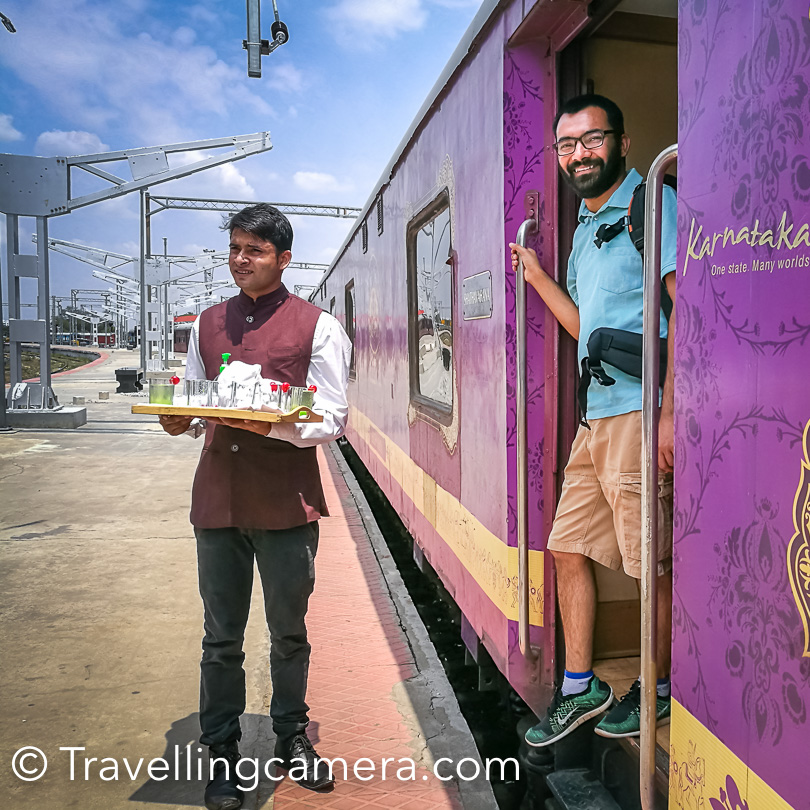



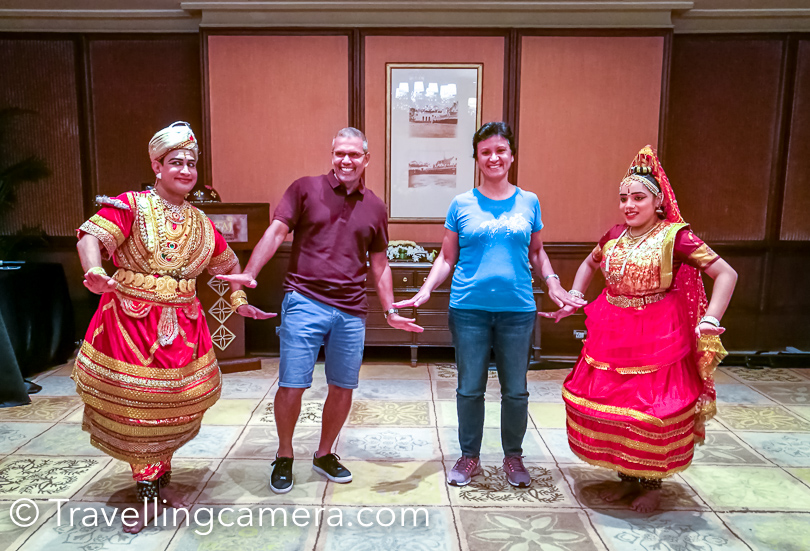
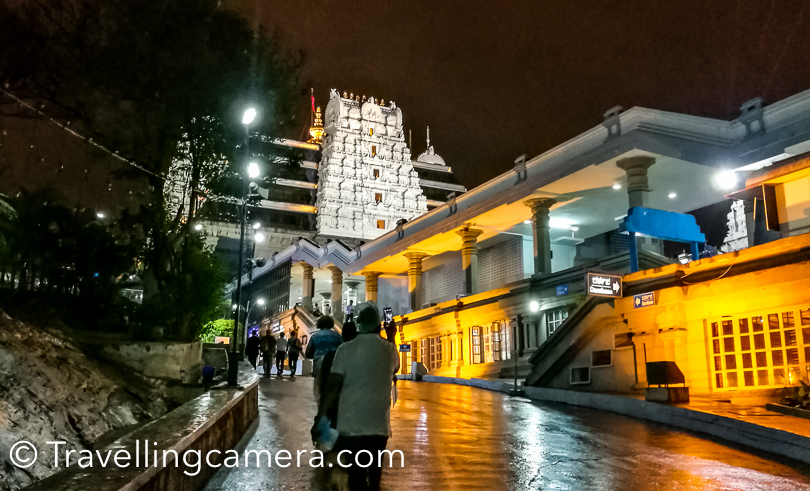
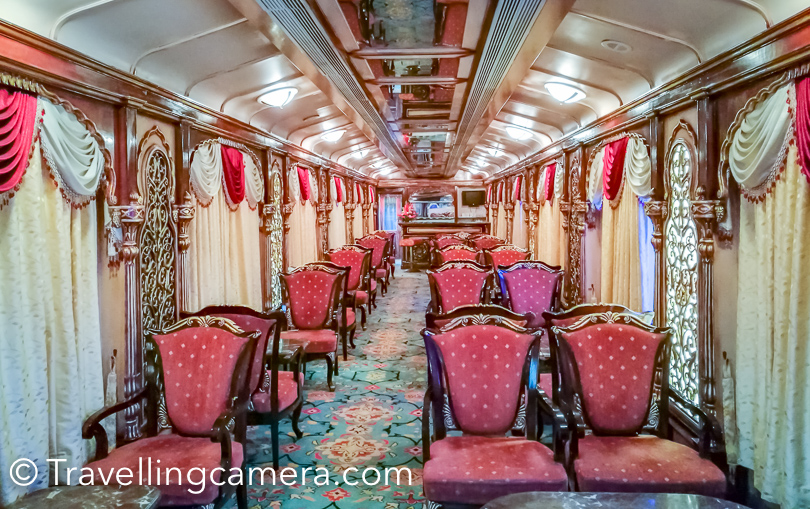
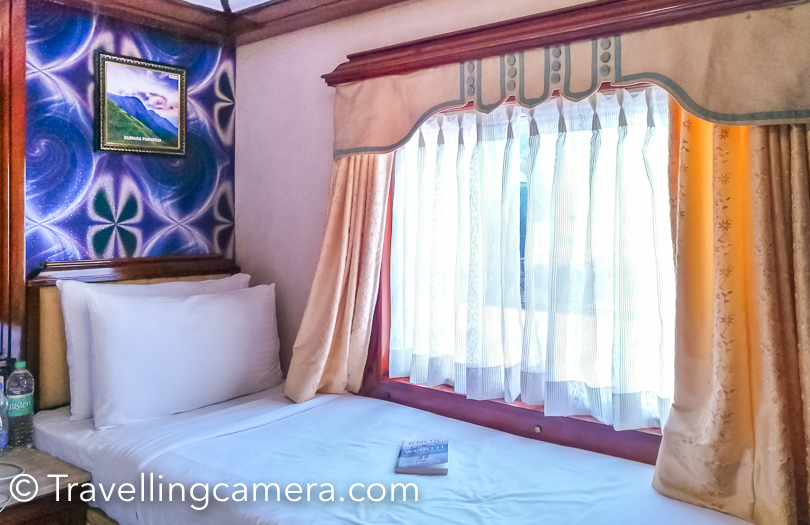





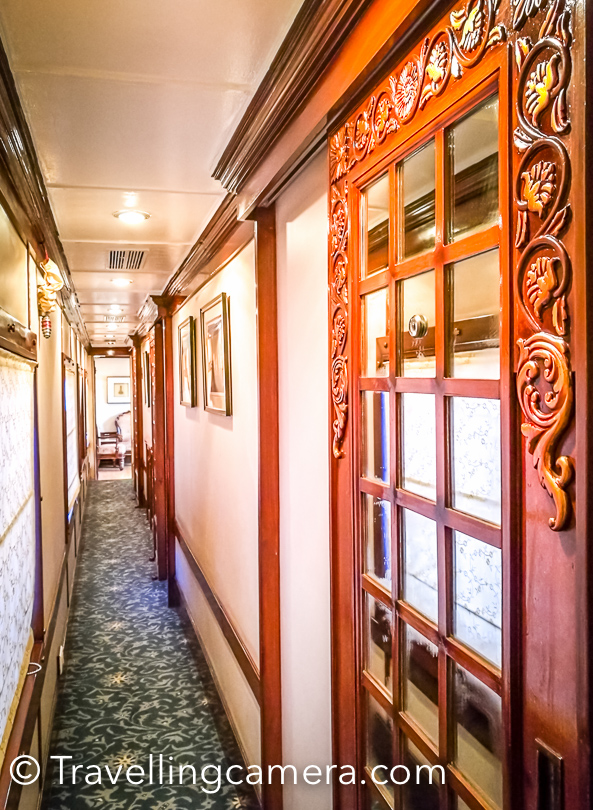
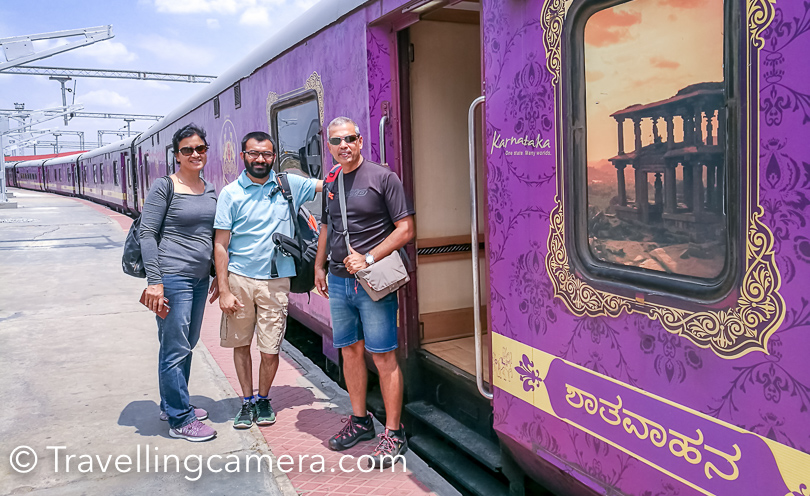



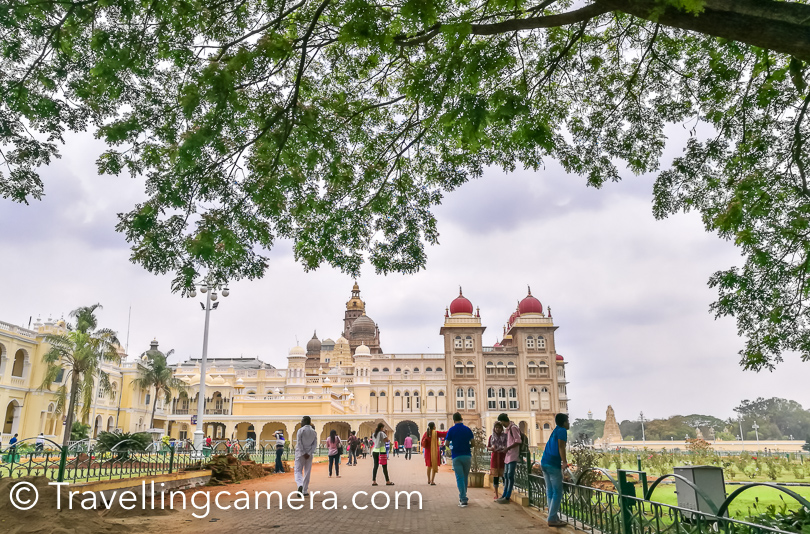

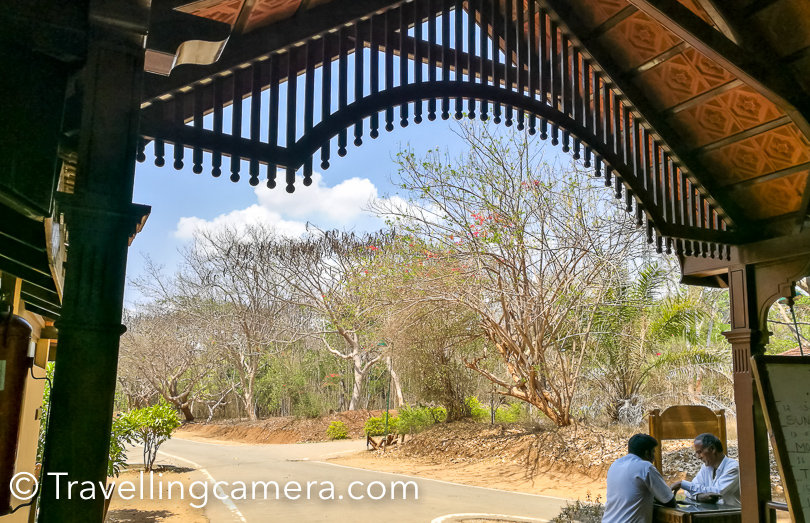
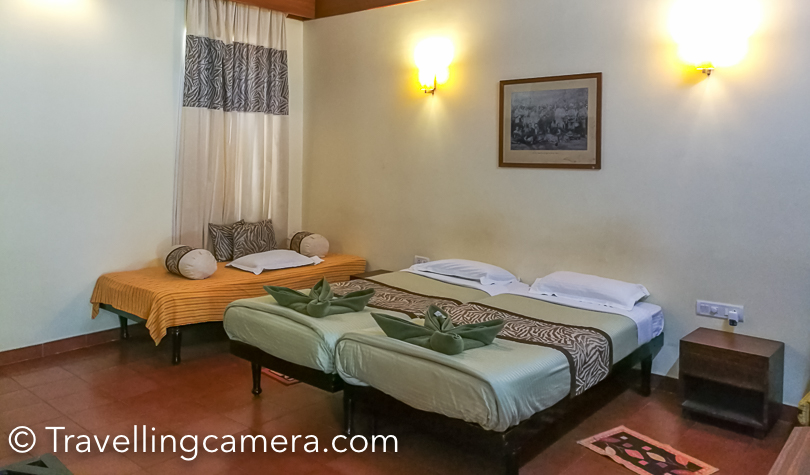






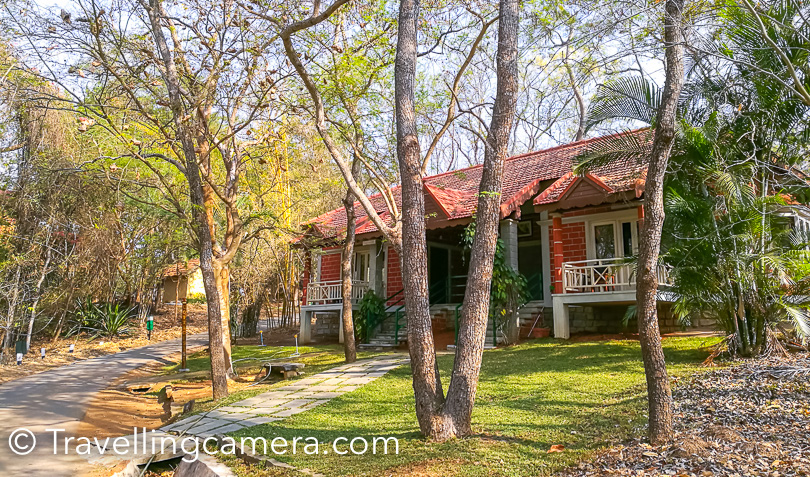

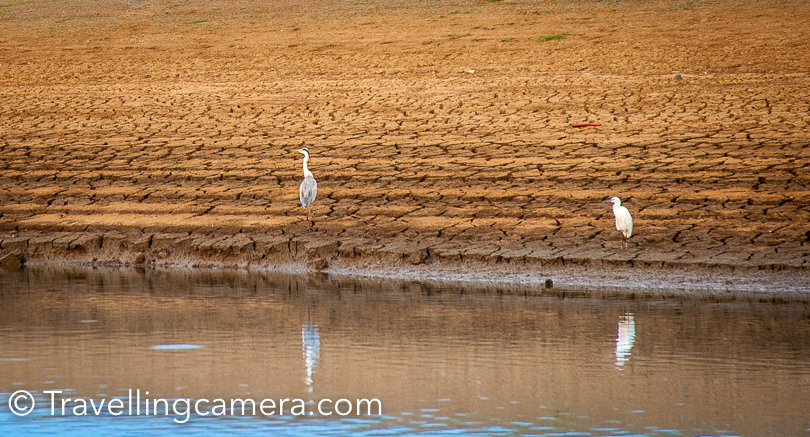
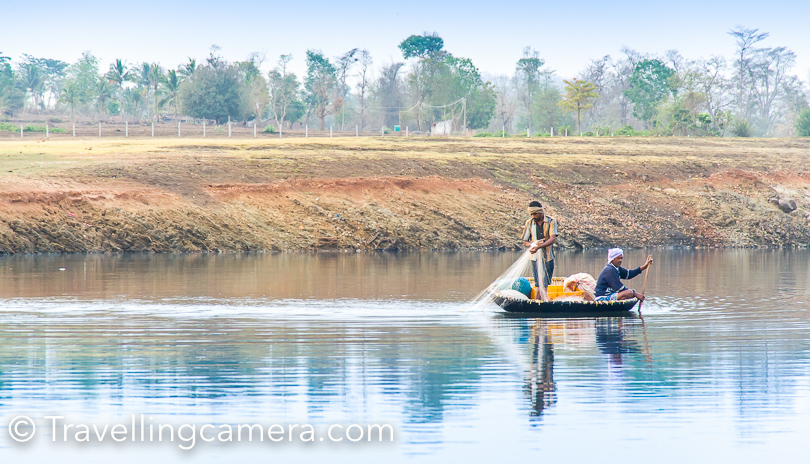





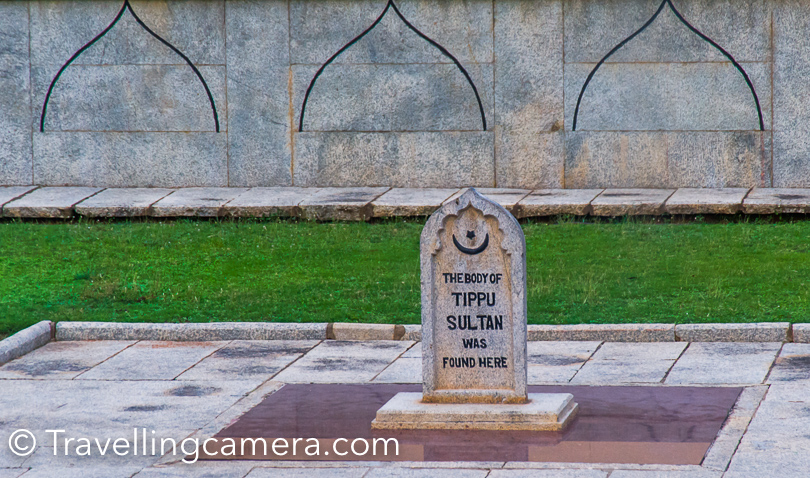

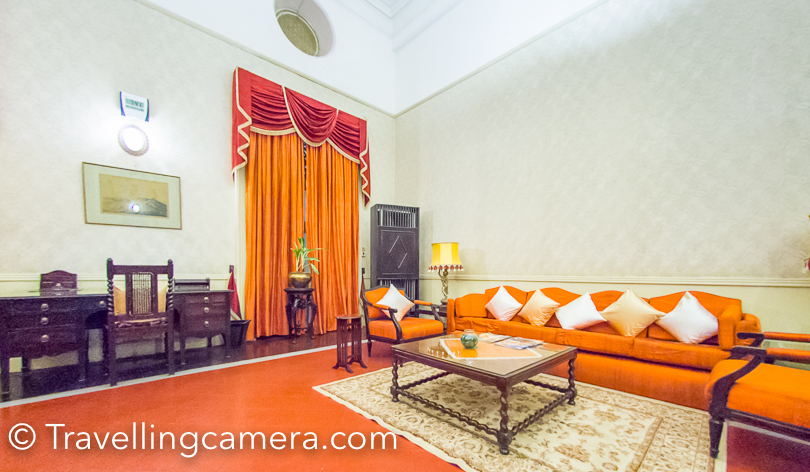



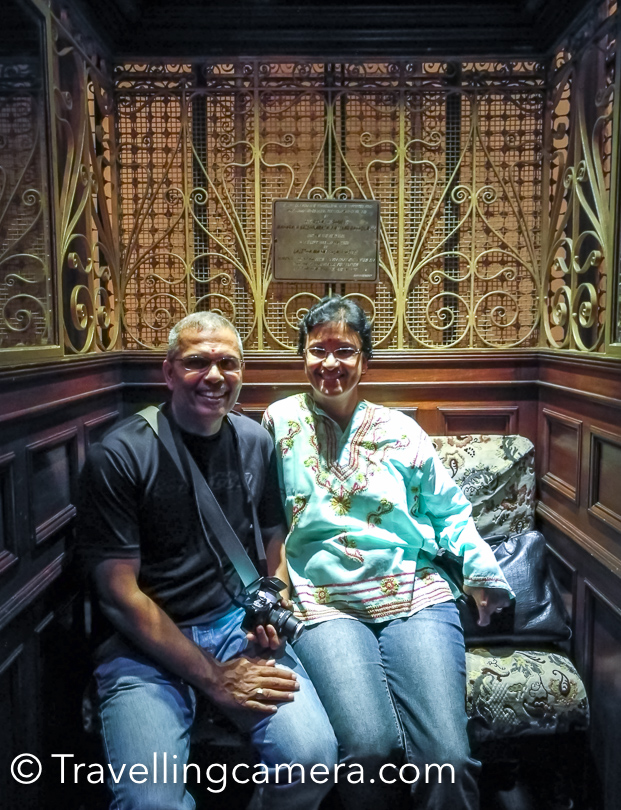


























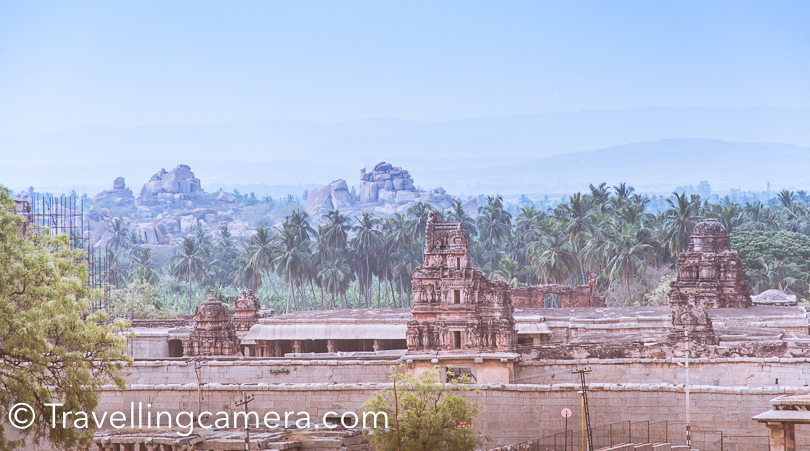

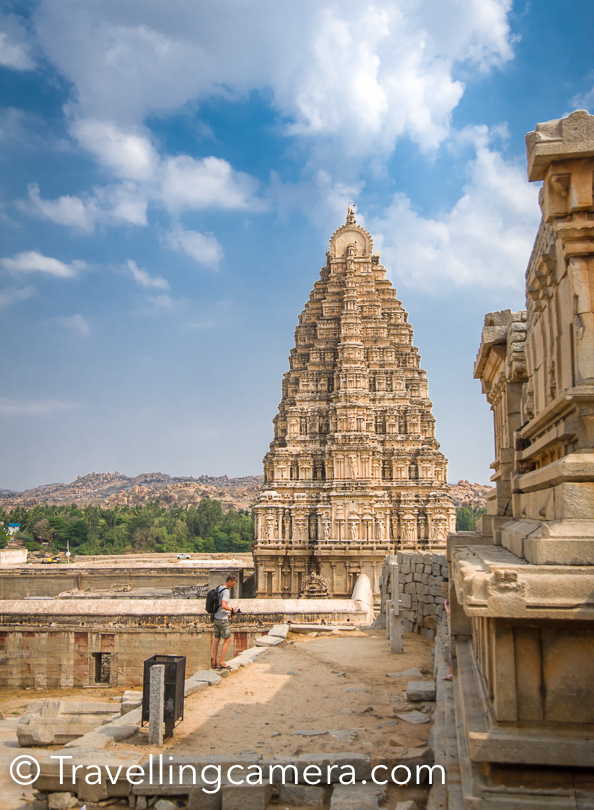

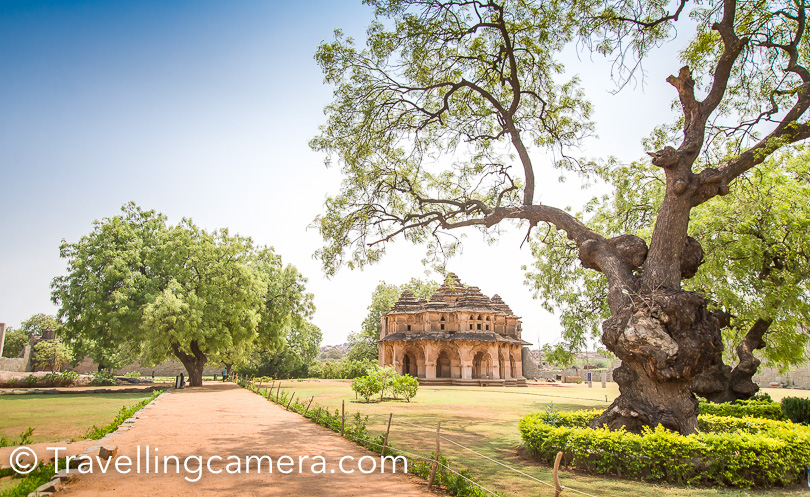


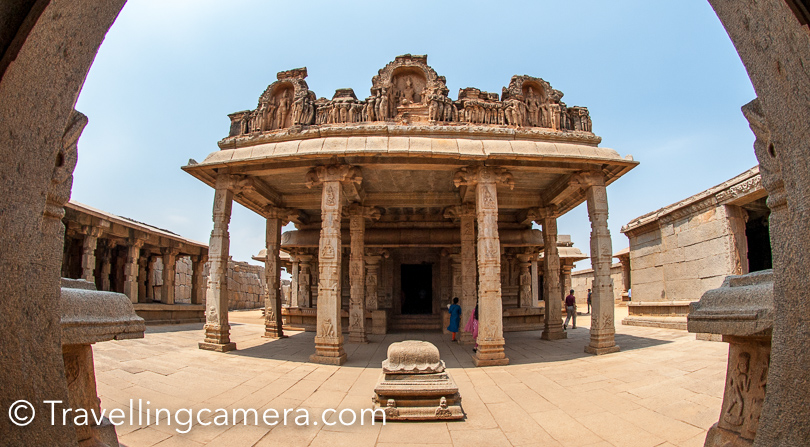

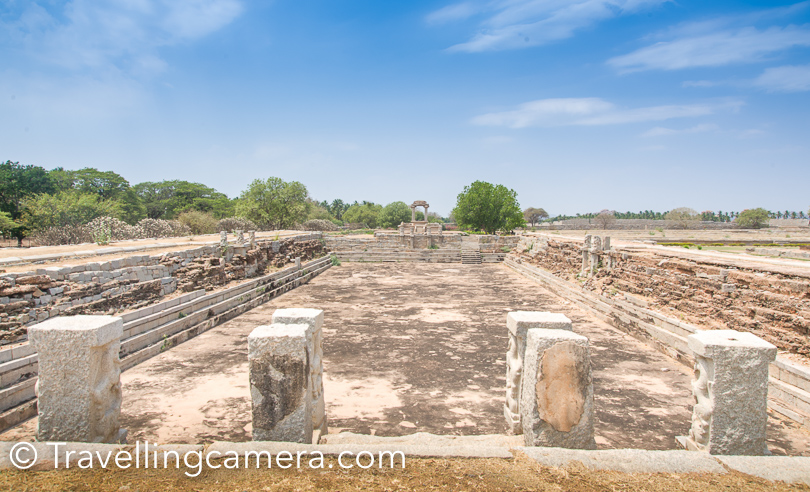
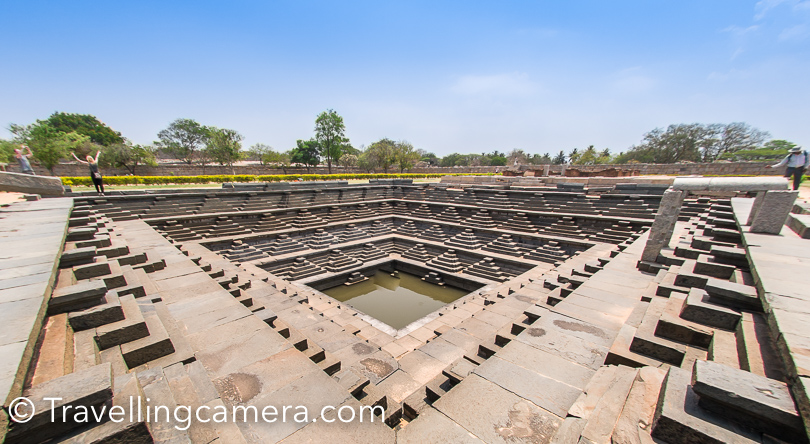



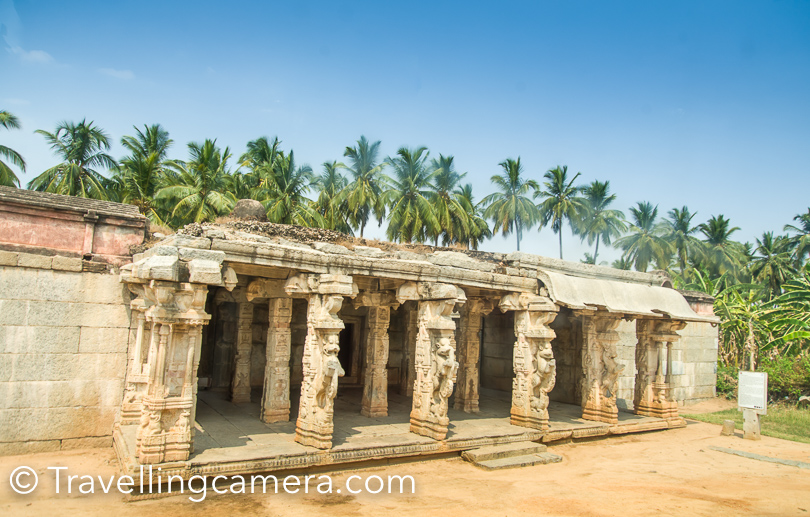





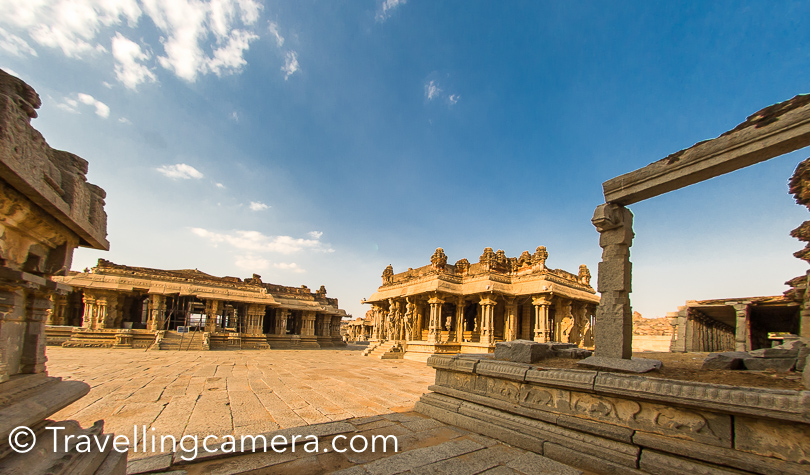






























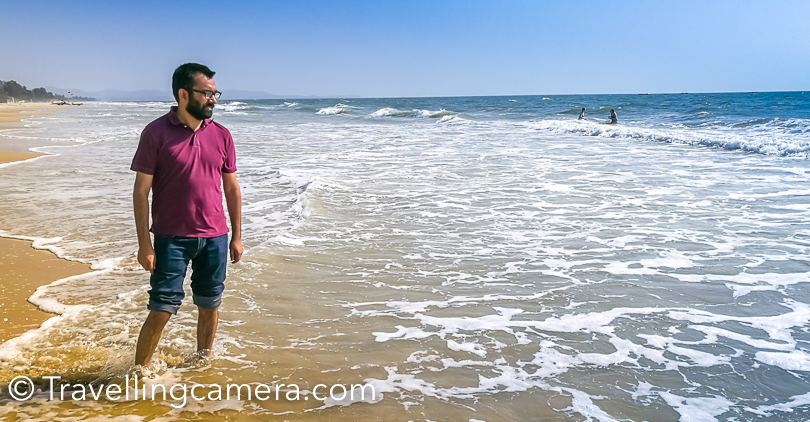




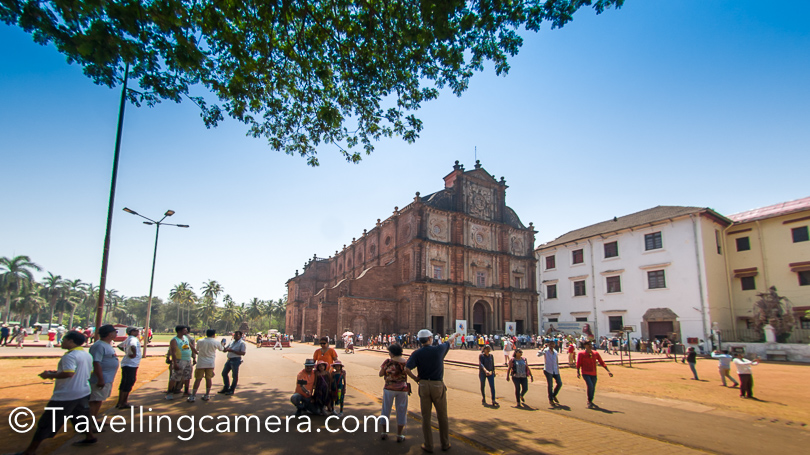



















.jpg)
Comments